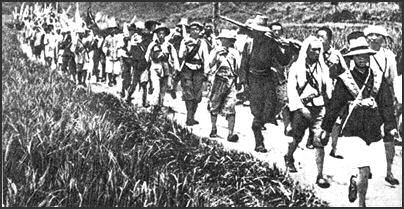There are still a lot of factors to be considered for China's Red Army Route to be chosen as one of the United Nations Organization for Education, Science and Culture's (UNESCO) world heritage sites.
Li Houqiang, Communist Party of China (CPC) secretary of Sichuan Academy of Social Sciences, who announced the proposal four years ago along with his associates, confessed that the application for the Red Army Route is not an easy task.
As of now, the application is still at its theoretical and publicity phase.
The CPC secretary stated that "management mechanism and a cross-region coordination regime should be established while a systematic planning and protection scheme will also be considered before the project can move forward."
The deficiency of manpower, resources and funds was also considered as barriers of the application, Li added.
The Red Armies are troops of soldiers under the CPC who performed the Long March in Oct. 1934 as an act of retreat after Kuomintang, another political party in China, ravaged their Fifth Encirclement Campaign.
Major troops of the Red Army, approximately 300,000, had to travel by foot from their base on the southern part of Yangtze River to Shaanxi Province where they walked for over 12,500 kilometers, passing 14 provinces.
It took two years for the troops to reach Shaanxi.
Their vast numbers roughly reduced to 25,000 troops as they met oppressions and sufferings while passing through the cold mountains, hills, swamps and desolated areas.
"The march's huge scale and enormous difficulties are rarely seen in human history. The march itself represents the toughness of human spirit and the strength of faith. It is the cultural and spiritual treasure for all humankind, regardless of their nationalities and races," Li said.
China should come up and deal with the barriers of the Red Army's application as it makes the world understand the significance of the Long March. It may be very important to the Chinese people, but it is not an assurance that it would be recognized by the world as it has strong ideological undertones, Lu Zhou, director of Tsinghua University-National Heritage Center, said.
On the other hand, Pei Yu, a cultural and tourism scholar, strongly believes that if the application was granted, it would enhance the tourism potential of the area as it would boost China's investment in "Red Tourism" as well as create job opportunities, the Global Times reported.
He further stated that the income from "Red Tourism" would gross to 200 billion yuan ($32 billion).
This year marks the 80th anniversary of the Red Army's entry into Sichuan, and next year will be the 80th anniversary of the victory of the Long March.



























